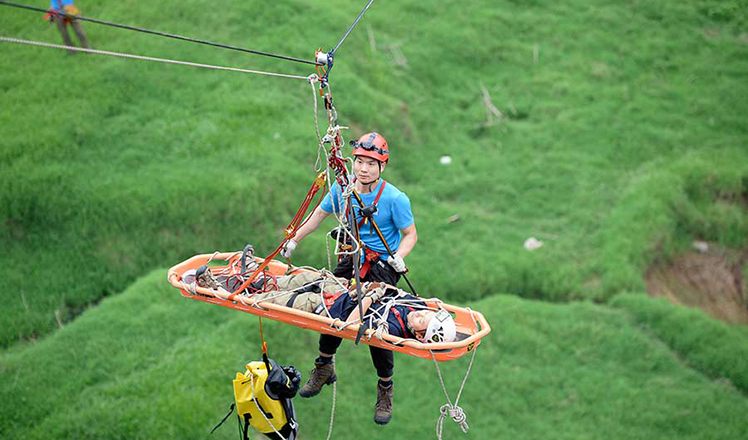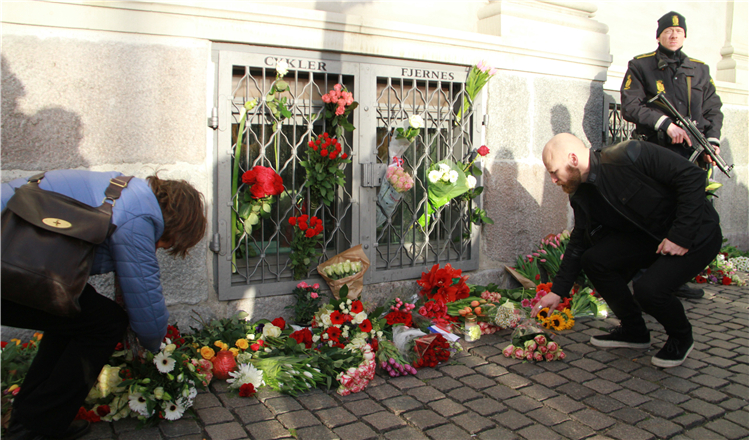Are human beings worse than Chernobyl?
Updated: 2016-01-11 07:56
By Jim T.smith(China Daily)
|
||||||||
 |
|
Guards of honour march with a wreath during a memorial ceremony for Chernobyl victims in Minsk April 26, 2012. Belarus, Ukraine and Russia marked the 26th anniversary of the Chernobyl disaster, the world's worst civil nuclear accident, on Thursday. [Photo/Agencies] |
Nearly 30 years have passed since the nuclear accident at Chernobyl, and the scientific community is still arguing about the impact radiation is having on the ecosystem surrounding the reactor. Recently, together with other scientists, I studied the animals in the human exclusion zone around the plant.
The results were shocking: whatever the impact of radiation on animals may be, the effects of human habitation seem to have been a lot worse. The site offers a stark reminder that humans' simple, physical presence in a habitat is more damaging than one of the 20th century's worst environmental catastrophes.
We studied animals in the nearly 2,200-square-kilometer sector of the exclusion zone in Belarus called the "Polessye State Radioecological Reserve". Before the disaster, this area was home to 22,000 people in 92 villages, and the land was farmed and exploited for its forest resources. In the days after the accident, the area's human residents were evacuated with their farm animals to protect them from high levels of radiation.
Even though radiation levels have dropped by a factor of nearly 100 in the months after the accident, the area is still judged unfit for human habitation. There are few reports on the effects of the accident on wild animals, but we know that in some radiation hot spots trees and wildlife died.
Some people might expect, nearly 30 years later, the area around the reactor to remain a wasteland, sparsely populated by genetically damaged animals exposed to chronic radiation across multiple generations. The reality is very different. Indeed, as early as a few years after the accident, data collected by Belarusian scientists conducting helicopter surveys over the abandoned area showed rising numbers of wild boar, elk and roe deer.
And, with the passage of time, the region's wildlife population continued to grow, as animals made use of what people had left behind. Crops, gardens and orchards provided abundant food supplies. Abandoned houses and farm buildings offered ready-made nests and dens. By 1993, the number of wild boars had increased six-fold, before halving because of a disease outbreak and predation from the rapidly growing wolf population.
- Global health entering new era: WHO chief
- Brazil's planning minister steps aside after recordings revelation
- Vietnam, US adopt joint statement on advancing comprehensive partnership
- European border closures 'inhumane': UN refugee agency
- Japan's foreign minister calls A-bombings extremely regrettable
- Fukushima impact unprecedented for oceans: US expert

 Stars of Lijiang River: Elderly brothers with white beards
Stars of Lijiang River: Elderly brothers with white beards
 Wealthy Chinese children paying money to learn British manners
Wealthy Chinese children paying money to learn British manners
 Military-style wedding: Fighter jets, grooms in dashing uniforms
Military-style wedding: Fighter jets, grooms in dashing uniforms
 Striking photos around the world: May 16 - May 22
Striking photos around the world: May 16 - May 22
 Robots help elderly in nursing home in east China
Robots help elderly in nursing home in east China
 Hanging in the air: Chongqing holds rescue drill
Hanging in the air: Chongqing holds rescue drill
 2.1-ton tofu finishes in two hours in central China
2.1-ton tofu finishes in two hours in central China
 Six things you may not know about Grain Buds
Six things you may not know about Grain Buds
Most Viewed
Editor's Picks

|

|

|

|

|

|
Today's Top News
Liang avoids jail in shooting death
China's finance minister addresses ratings downgrade
Duke alumni visit Chinese Embassy
Marriott unlikely to top Anbang offer for Starwood: Observers
Chinese biopharma debuts on Nasdaq
What ends Jeb Bush's White House hopes
Investigation for Nicolas's campaign
Will US-ASEAN meeting be good for region?
US Weekly

|

|







